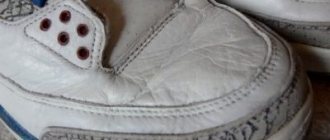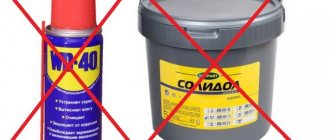A swimming pool at the dacha means water treatments and a pleasant pastime. But the water in this artificial hydraulic structure is not filtered, as is the case in natural reservoirs. Therefore, it gradually stagnates and begins to “bloom”, turning greenish. And an unpleasant smell begins to appear. Therefore, the owners of a reservoir are faced with a problem that creates one question - how to purify the water in the pool, what methods are used for this.
How and with what to clean the water in the pool Source actionquarterly.com
Why does the pool water turn green?
A set of water from natural reservoirs. Most often, people fill the pool with river water, which already contains a lot of algae and microorganisms. Since the water in the pool is standing all the time, and it is constantly in the sun, not covered by anything, it is not difficult to assume that these conditions lead to greening of the water and other changes.
- Poorly functioning filtration system, if there is one at all. After all, in water that stands all the time, it is much easier for bacteria to multiply and develop.
- The content of chemicals in the water is impaired. When adding chlorine to water, you need to be careful. If you add too little or too much chlorine, the water will bloom. We need to try to find a “golden” mean.
- High iron content. If the water turns green, but does not become cloudy and does not smell, then perhaps the problem is iron. In this case, it is recommended to adjust the acidity of the water.
Cleaning outdoor and indoor tanks - what's the difference?
The difference between cleaning an outdoor pool and an indoor structure is the frequency of cleaning.
Indoor objects are less likely to be exposed to foreign debris , leaves, and water blooms.
The outdoor pool must be cleaned of foreign debris and dust once a week. It is also mandatory to use special products that help eliminate various microorganisms and algae.
Is it possible to swim in green water
As such, the algae itself will not cause harm to humans, but due to the low content of chlorine in the water, or due to its absence, bacteria may appear in the water, which can already cause significant harm to health.
In addition, such water is simply unpleasant. She smells disgusting and the whole pool becomes slimy. Therefore, it is better not to swim in blooming water.
Where and approximately at what price can I order the service?
Professional pool cleaning is an expensive service. The price depends on several factors:
- cleaning of the pool water or surface is required;
- choosing a cleaning method;
- region.
The events are carried out by private masters, as well as various companies. To carry out the procedures, special equipment is used, which requires preliminary configuration.
The cost of services varies on average between 800-1500 rubles per cubic meter of water or square meter of area. When using modern methods, including electrophysical ones, the price will be higher. An additional factor that will affect the price of the specialist’s services will be the complexity of the contamination.
Instructions on how to clean a pool with your own hands
Today there are many ways to combat algae in the pool: from folk to store-bought.
Pool treatment with chlorine
If it does happen that the water in the pool begins to turn green, then the first thing you need to do is equalize the acidity of the water to 7 PH. To do this, you first need to turn on the filter, and then add a special product to lower or increase the pH of the water. Then perform shock disinfection using chlorine. Leave for a day.
Hydrogen peroxide for the pool
Treating water with peroxide is a fairly popular method. It is inexpensive and effective.
- First you need to clear the water of debris (drowned insects, leaves from trees, sticks) using a juicer.
- Remove green deposits from the walls of the pool, for example, with a scraper.
- Be sure to turn on the filter so that it collects all the dead greens after pouring the peroxide. Otherwise, it will lie to the bottom and again cause trouble in the future.
- Typically, 37% hydrogen peroxide is used to purify water.
- Calculate how much product needs to be added to the available volume of water.
- Think about safety measures. It is necessary to protect your eyes and skin of your hands when working with a large percentage of peroxide. You need to wear gloves and goggles.
- Pour in peroxide using a pump in filtration mode. If it is not there, then you can pour peroxide with a watering can. To do this, divide the product into several equal parts and pour it into different parts of the pool using a watering can.
It is important not to swim in a pool with peroxide for two days, otherwise it will harm your health.
After introducing the product, there is no need to cover the pool with any film, because the main conditions for a good reaction of peroxide in the water are a constant supply of sunlight and a water temperature of at least 27 degrees.
Think ahead
A properly built pool already provides means of protection against pollution - these are skimmers - pumps that are equipped with filters and work on the principle - they suck in dirty water, pass it through the filters and release clean water. All stationary pools are equipped with such a water treatment system. Moreover, you can choose the number of skimmers and how to install them. But, as practice shows, even with the installation of several such pumps, only half of the water in the pool is cleaned. How to purify the water completely so that instead of health and vigor, you do not catch any diseases? This question is especially relevant in the summer for pool owners:
- large volumes;
- street type;
- without roofs.
The cost of a skimmer for a stationary pool ranges from 1,500 to 20,000 rubles, the cost of a mounted skimmer is 1,300 to 15,000 rubles. The cost of pool pumps varies from 9,781 to 175,038 rubles.
Which is better: Chlorine or peroxide
- Peroxide, unlike chlorine, does not cause such severe harm to human health. Chlorine vapors can have a negative effect on human mucous membranes and irritate them.
- Chlorine is more effective. It cleans and disinfects much better and can even kill E. coli.
- Peroxide as an oxidizing agent is about 30% stronger than chlorine.
- Chlorine acts much faster, while peroxide acts for about two days.
So what is the best way to process it? The best solution in such a situation would be to alternate these funds.
Comparison with factory-made drugs
Let's compare traditional and chemical cleaning methods using the table for clarity:
| Indicators | Traditional methods | Chemical methods |
| Disinfection | Effective water treatment and removal of harmful bacteria is possible | Effective disinfection in shock or preventive modes |
| Removing algae, cleaning greens | Water treatment is carried out together with disinfection, as part of the overall cleaning process | In addition to general treatment, you can use specialized preparations to perform one specific task |
| Removal of organic suspended matter, coagulation | The procedure is partially carried out during general processing | Availability of specialized compounds for binding and removing suspended matter, removing turbidity |
| pH level adjustment | Partially produced | There are specialized kits for express analysis of water composition and pH adjustment to a given value |
| Removing mucus and plaque from the walls and bottom of the bowl | Produced during water purification | Performed during cleaning or performed with specialized preparations |
| Possibility of use in combination with other products | Can be used with most formulations | There are different types of formulations, some that are neutral to other drugs, and some that require independent action. |
| The need to use filtration piping | Not required | Piping is required; the circulation system is used to supply and mix the compositions |
| Price level | Low, you can use improvised means | High, drugs are purchased from specialized trade organizations |
Analyzing the table data, we can draw a conclusion about a more accurate and targeted impact of chemicals . The advantages of traditional methods can be considered simplicity, accessibility, and the ability to perform basic methods of purifying water from major pollutants.
Important! The table deliberately did not consider physical methods of water treatment - ozonation, ultraviolet treatment, conventional filtration using standard installations. These methods can be used regardless of the composition of the water, so their use can be considered an independent type of treatment.
Other water purification products
These products are less effective and will not remove severe stains, but they can be used for prevention.
Zelenka
Depending on the volume of the pool, you need to add one or two bottles. After adding, the water will become more transparent and acquire a beautiful color.
Copper sulfate
When using this product, you must strictly adhere to the dosage, because copper sulfate is, after all, a poison, but if the exact dosage is observed, not exceeding the safe level, it will not cause harm.
First, the product must be diluted in water, and then the resulting liquid must be poured into the pool. In one liter of water you need to dilute 0.9 grams of the substance.
Let's compare all the methods with each other
| Means | pros | Minuses |
| Zelenka |
|
|
| Copper sulfate |
|
|
| White |
|
|
| Pool mushroom |
|
|
| Potassium permangantsovka |
|
|
| Salt |
|
|
| Drugs |
|
|
| Perhydrol |
|
|
How to clean a pool (step by step instructions)
It is very important to drain the water and clean the pool approximately once a season so that plaque and various microorganisms do not accumulate on it.
- Drain the pool water.
- Clean the walls and bottom of the pool with soapy water and a brush.
- Use a special vacuum cleaner to remove all dirt from the bottom.
- Remove and clean filters, if present.
- Then go over the walls and bottom with a sponge and a product that contains chlorine, such as bleach.
- Pour clean, fresh water into the pool without rinsing the remaining chlorine solution.
Purifying bloomed water is simple, no matter how impossible it may seem at first glance.
The main thing is to adhere to strict dosages when using chemicals and follow all recommendations given by the manufacturers.
Filters
Filters are a mechanical cleaning method. Thanks to them, you can remove small particles and clean all layers of pool water. It should be remembered that the filter must be selected taking into account that it has time to pass water through itself 2-3 times per day.
They need to be washed once every 10 days, and cleaned several times a year. Installation of filters should be carried out by a specialist.
There are many types of filters, each of which has pros and cons.
| Filter | pros | Minuses |
| Sand |
|
|
| Diatomaceous earth |
|
|
| Cartridge |
|
|
More details about filters: Filters











